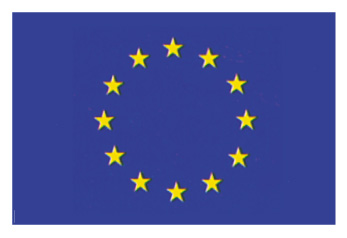Slovakia is a country in central Europe. It is bordered by Poland on the north, Ukraine on the east, Hungary on the south, and Austria and the Czech Republic on the west. A series of mountain ranges covers most of the country.
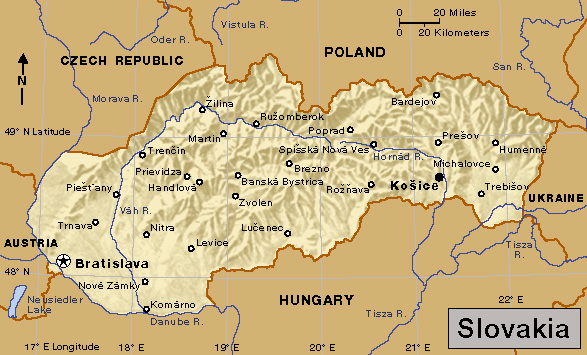
Bratislava is the capital and largest city of Slovakia. A Slavic people called Slovaks make up most of the country’s population. Hungarians make up the second largest ethnic group in Slovakia.
For much of its history, Slovakia formed part of larger states. Hungary ruled the country from the 900’s until 1918. That year, the Slovaks joined with the Czechs and with other local groups to form the country of Czechoslovakia.
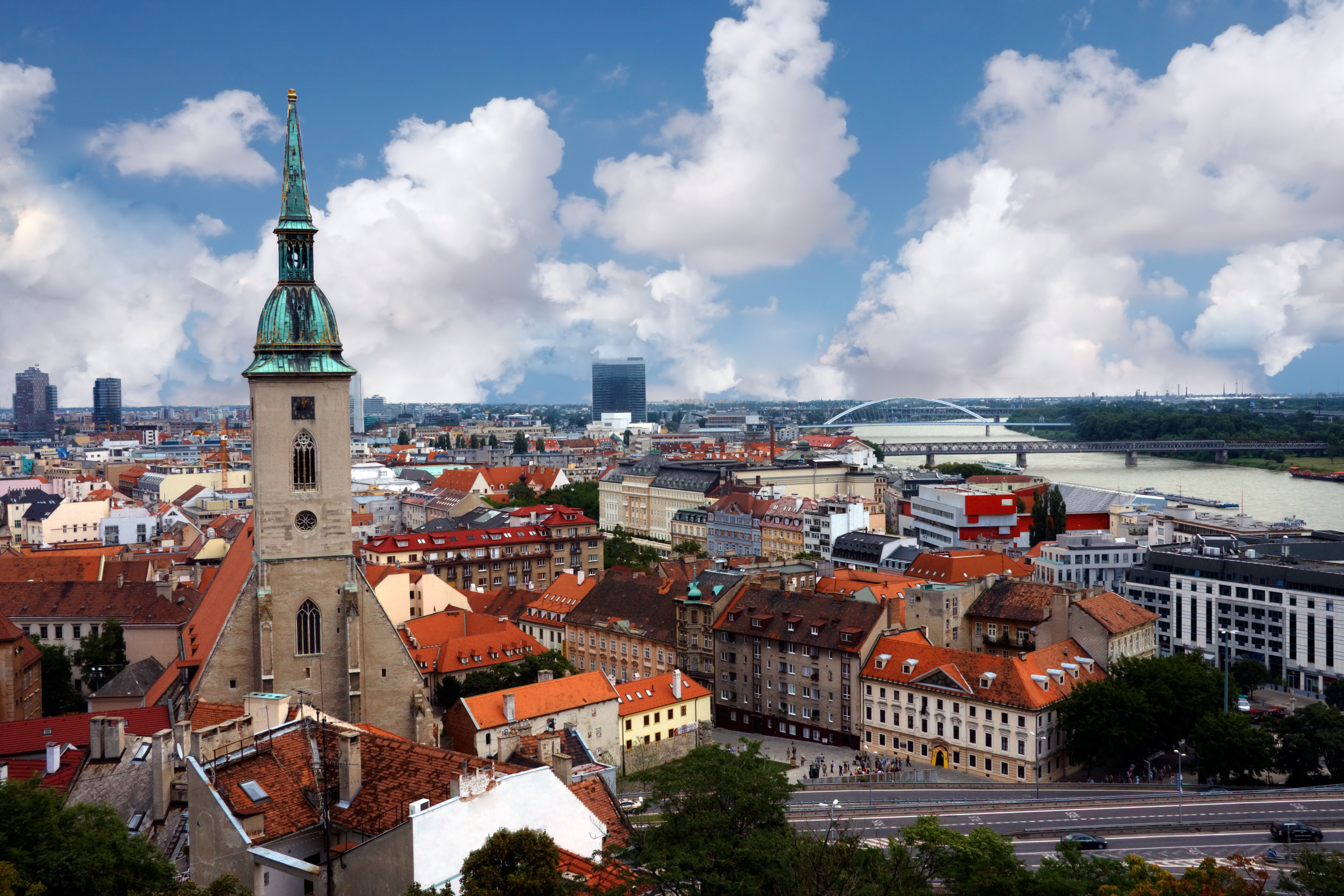
In 1948, Communists took over Czechoslovakia’s government. In 1989, following protests by large numbers of Czechs and Slovaks, the Communist government resigned and non-Communists came to power. Soon afterward, the Czechs and Slovaks began to disagree about important economic and political issues. In mid-1992, Czech and Slovak leaders decided to split Czechoslovakia into two nations, one for Czechs and one for Slovaks. On Jan. 1, 1993, the Czech Republic and Slovakia were created to replace Czechoslovakia.
Government
Slovakia is a parliamentary democracy. A one-house parliament called the National Council makes the country’s laws. Voters elect the 150 members to four-year terms. A president serves as head of state. The people elect the president to a five-year term. The president appoints a prime minister, who serves as head of government. The prime minister is usually the head of the party with the most seats in parliament. The president also appoints a cabinet on the advice of the prime minister. The cabinet helps the prime minister carry out the executive functions of the government. The prime minister has executive authority in the government.
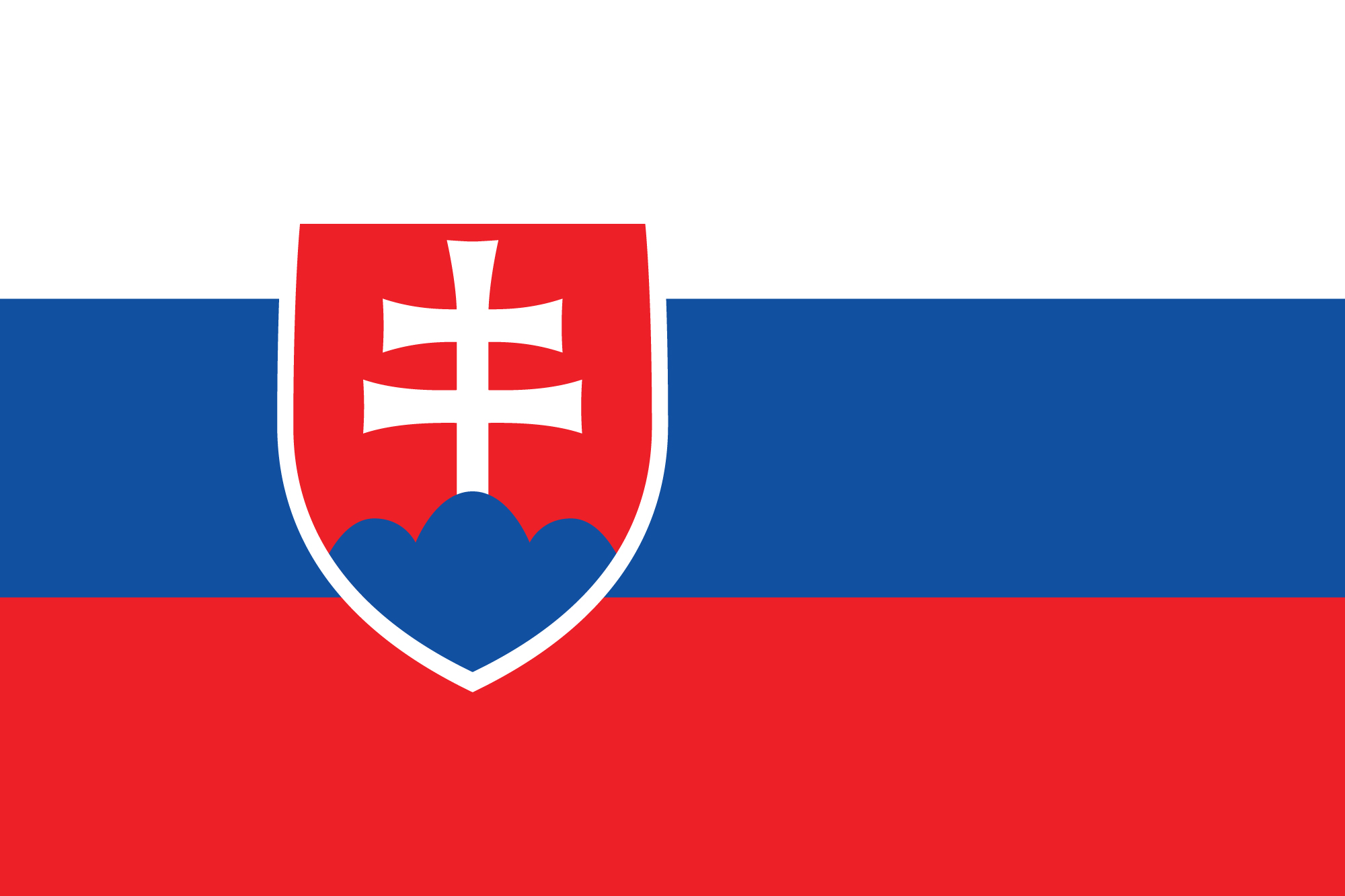
Slovakia national anthem
Slovakia has many active political parties. They include the Direction-Social Democracy party, the Ordinary People and Independent Personalities party, and others.
The Supreme Court is Slovakia’s highest court. The president appoints the Supreme Court judges on the advice of a judicial council.
Service in the armed forces of Slovakia is voluntary. Both men and women may enlist.
People
Ethnic groups and languages.
Slovaks make up the majority of Slovakia’s population. People of Hungarian descent form the second largest ethnic group. Smaller numbers of Czechs, Germans, Poles, Russians, and Ukrainians also live in Slovakia. Roma (sometimes called Gypsies), make up a substantial minority.
Slovak is Slovakia’s official language. Czech, German, Hungarian, and Polish are also spoken. The Roma speak Romany, which belongs to the Indo-Iranian group of languages. Since the end of Communist rule, tensions have surfaced between Slovaks and the Hungarian minority over language and cultural issues.
Way of life.
About half of Slovakia’s people live in towns and cities. The largest cities include Bratislava, Košice, Nitra, Presov, and Zilina. Many urban residents live in high-rise apartments constructed during the Communist period. Most rural families live in single-family houses.
The standard of living is higher in Slovakia than it is in many other formerly Communist countries in Europe. Most families own automobiles, refrigerators, televisions, and washing machines. Many city families have weekend cottages in the country.
The lifting of political controls and the opening of borders after the end of Communist rule have caused an increase in crime and drug abuse in Slovakia. Air and water pollution are serious threats in many parts of the country, especially in the cities.
Food and drink.
Bryndzove halusky (noodles with sheep’s cheese) is a typical Slovak dish. A paprika-flavored stew called goulash and other Hungarian dishes are also popular. Wine and a plum brandy called slivovice are common alcoholic beverages.
Recreation.
Slovakia’s people enjoy a variety of leisure activities. Many people attend soccer matches and other sporting events. Skiing is also popular. City residents often spend their evenings socializing with friends in wine cellars or attending ballets, concerts, operas, or plays. Many families enjoy camping, hiking, and mountain climbing.
Religion.
Most people in Slovakia are Roman Catholics. Most Protestant denominations and an Eastern Orthodox group called the Orthodox Church of the Czech Lands and Slovakia are also active. The country has a small Jewish population. Most of Slovakia’s Jews were killed by the Nazis during World War II (1939-1945).
Education.
Almost all adults in Slovakia can read and write. Children are required to attend eight years of elementary school and two years of secondary school. Comenius University in Bratislava is Slovakia’s leading university. Košice, Presov, and Trnava also have universities.
The arts.
Folk art has a long tradition in Slovakia. The best-known objects made by folk artists are baskets, glass paintings, pottery, and woodcarvings. Painted wooden houses and other forms of folk architecture are found in many regions, including the Ukrainian villages of eastern Slovakia.
Land and climate
A series of mountain ranges, part of the western branch of the Carpathian Mountains, covers most of Slovakia. The Little Carpathians and the White Carpathians dominate much of western and northwestern Slovakia. A range called the High Tatras extends along part of the country’s northern border. Gerlachovsky Stit, Slovakia’s highest peak, rises 8,711 feet (2,655 meters) in this range. The great beauty of the High Tatras has made the area a favorite vacation spot. It is also a national park. The industrial city of Košice lies at the foot of the Carpathians.

The Danubian Lowlands make up southwestern Slovakia. The Danube River forms the southern boundary of this region. The lowlands are a fertile farming region. Farmers raise corn, wheat, and hogs there. Bratislava is the area’s main industrial center.
Several rivers wind through Slovakia, including the Danube, the Hornád, the Hron, and the Váh. Fir and spruce trees cover many of the country’s mountains. Beeches, birches, lindens, and oaks grow in lower areas. Foxes, muskrats, rabbits, squirrels, and weasels inhabit the forests. Wild boars, wolves, and other wild animals roam remote mountain slopes.
Slovakia’s climate varies greatly by elevation. Temperatures range from a low of 14 °F (–10 °C) in January to a high of 68 °F (20 °C) in July. Slovakia receives from 24 to 40 inches (60 to 100 centimeters) of rain, snow, and other forms of moisture annually.
Economy
Slovakia had been an agricultural region for most of its history but became industrialized under Communist rule. Czechoslovakia’s Communist government centralized the economy after it came to power in 1948, taking control of almost all the country’s land and businesses. The Communists emphasized heavy industry, such as the manufacture of machinery and steel.
After the Communist government left office, Czechoslovakia’s new leaders took steps toward establishing an economy based on free enterprise. In a free enterprise economy, businesses operate without extensive government control. Many private businesses were established in Slovakia. Most of them were in construction, manufacturing, and retail trade and other service industries. Additionally, many state-owned businesses became privately owned. Today, most businesses in Slovakia are privately owned.
Service industries and manufacturing
form the backbone of Slovakia’s economy. Service industries employ over half the country’s workers. Hotels, restaurants, and shops benefit from the tourists who visit Slovakia from the Czech Republic, Germany, Poland, and other countries. The service sector has developed rapidly since the end of Communist rule.
About a fourth of Slovakia’s work force holds jobs in manufacturing. Slovakia’s leading manufactured products include automobiles, chemical products, electronics, food products, machinery, petroleum products, and steel. Bratislava and Košice are the country’s main industrial centers.
Agriculture
accounts for less than 5 percent of both Slovakia’s workforce and its total economic production. Apples, barley, corn, potatoes, sugar beets, tomatoes, and wheat are among Slovakia’s primary crops. Farmers grow wine grapes in southern Slovakia. Slovak farmers also raise beef and dairy cattle, chickens, and hogs. 
Mining and energy.
Mining plays a small role in Slovakia’s economy. The country mines copper, iron, natural gas, and petroleum. Deposits of brown coal lie near Handlova and Velky Krtis.
About half of Slovakia’s energy is generated by nuclear power plants. Hydroelectric plants operate on the Danube, Hornád, Orava, and Váh rivers. Coal, gas, and oil are also important sources of energy.
Trade.
Slovakia’s chief exports include chemicals, electrical equipment, iron and steel, machinery, and motor vehicles. Electrical equipment, machinery, petroleum products, and transportation equipment are the main imports. Austria, the Czech Republic, Germany, Poland, and Russia are Slovakia’s main trading partners.
Transportation and communication.
Slovakia has tens of thousands of miles of roads. Most of the country’s roads are paved. Railroads link all the major cities and many smaller towns. Bratislava and Komárno have ports on the Danube River. Bratislava and Košice have international airports.
Slovakia has numerous newspapers, magazines, and journals. The country has both state-owned and privately owned radio and television stations.
History
Early days.
Slavic tribes settled near the Danube River in what is now Slovakia in the A.D. 400’s and 500’s. In 623, Slovakia became part of an empire founded by Samo, a former merchant of a Germanic people known as the Franks. In the 800’s, Slovakia became part of the Great Moravian Empire established by a ruler named Mojmir. The empire also included Bohemia and Moravia, two main regions in what is now the Czech Republic. Hungarian tribes conquered the empire in 907. Hungary then ruled Slovakia for nearly 1,000 years.
Hungarian rule.
A period of religious wars began in Bohemia and Moravia in the 1400’s. Many Czech nobles fled Bohemia and Moravia and settled in Slovakia. From 1438 to 1453, a Czech noble controlled much of southern Slovakia. The Ottomans defeated Hungary in the Battle of Mohacs in 1526 and occupied central and eastern Hungary soon afterward. Slovakia became the cultural and political center of what remained of Hungary. But the Slovaks, most of whom were peasants, held no political power in the state.
During Hungarian rule, the Slovaks were pressured to give up their culture and language and become Hungarian. Beginning in the late 1700’s, Slovak religious leaders tried to create a sense of national identity among Slovaks. Until that time, Slovak writers had used Czech, German, or Hungarian for their literary works. Anton Bernolak, a Roman Catholic priest, tried to standardize the Slovak language in written form, based on western Slovak dialects. Ján Kollár and Pavel Safárik, two Slovak Protestants, tried to standardize the language from Czech and central Slovak dialects. But Hungarian control prevented the growth of a large nationalist movement among Slovaks, and the language was not successfully standardized until the 1840’s. In 1867, Austria and Hungary formed a monarchy called Austria-Hungary.
The formation of Czechoslovakia.
At the end of World War I (1914-1918), Austria-Hungary collapsed, and the Czechs and Slovaks united to form the new nation of Czechoslovakia. Slovakia’s economy was much less developed than those of Bohemia and Moravia. The Slovaks also had less experience in self-government than the Czechs did. Thus, the Czechs controlled Czechoslovakia’s economy and government. Efforts to industrialize Slovakia failed, due in part to the Great Depression, the worldwide economic slump of the 1930’s. Many Slovaks grew dissatisfied with Czech control, and support for extreme nationalist movements grew. 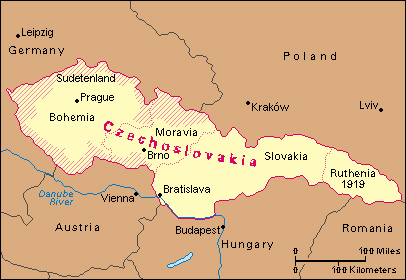
World War II.
In 1938, Hungary forced Czechoslovakia to give up several areas that had large Hungarian populations, including the city of Košice. These areas were along the border of Slovakia and Hungary. On March 14, 1939, faced with the threat of being divided between Germany, Poland, and Hungary, Slovakia declared its independence. Jozef Tiso, a Roman Catholic priest, was elected president. German troops occupied Czechoslovakia the following day, and Slovakia came under German influence. In September, World War II broke out. In 1944, several Slovak resistance groups fought against German control in the Slovak National Uprising.
Communist rule.
At the end of the war in 1945, Slovakia once again became part of Czechoslovakia. Tiso was convicted of treason and cooperating with the Germans. He was hanged, and other high-ranking officials were punished. From 1945 until 1948, Communists and members of other political parties ruled Czechoslovakia in a coalition government. In February 1948, the Communists staged a political crisis and took over the government. 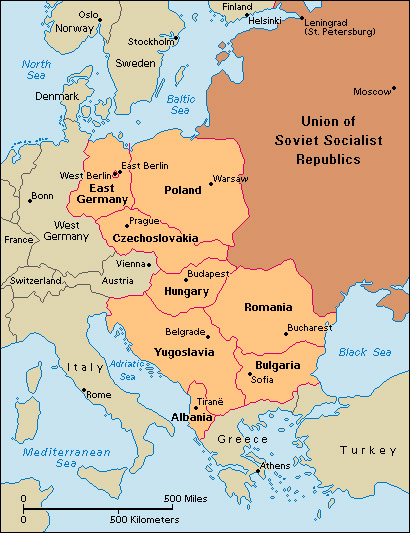
The Communist government patterned the country’s economy and political structure after those of the Soviet Union. The state took control of the country’s factories and almost all the other businesses. Farmers were forced to join government-owned state farms or collectives, in which the farmworkers jointly owned the property and farm equipment. The government silenced opposition to the Communist Party and took steps to decrease the influence of churches.
The 1960’s.
In the late 1960’s, many Slovak Communist Party leaders and intellectuals took part in a movement to reform the Communist system. The movement tried to create what came to be known as “socialism with a human face.” It was led by Alexander Dubcek, a Slovak who became head of the Czechoslovak Communist Party in January 1968. However, leaders in the Soviet Union and other European Communist nations feared that Dubcek’s program would weaken Communist control in Czechoslovakia. As a result, troops led by the Soviet Union invaded Czechoslovakia on Aug. 21, 1968.
Gustav Husak, another Slovak, replaced Dubcek as head of the Czechoslovak Communist Party in April 1969. Other leaders of the reform movement also lost their positions. The Husak government eliminated most of the reforms and reestablished tight political controls and censorship of the press. However, a 1968 amendment to the Constitution granted Slovakia slightly greater powers of self-government.
The Velvet Revolution.
In November 1989, Czechs and Slovaks gathered in the streets to demand changes in the government and greater political, economic, and civil freedoms. Less than a month later, Czechoslovakia’s Communist government resigned, and non-Communists gained control of the government. Communist rule in Czechoslovakia was replaced so smoothly and peacefully that it became known as the Velvet Revolution.
The first free elections since 1946 were held in June 1990. In the elections, non-Communists won a majority of seats in the legislature. The new government began working to create a free-enterprise economy and to reverse the policies of the Communist era. However, tensions between Czechs and Slovaks slowed economic reform and prevented the adoption of a new constitution.
The breakup of Czechoslovakia.
Czech and Slovak leaders disagreed about how quickly a free-enterprise economy should be created. The Slovaks wanted the state to keep a greater role in the economy than the Czechs did. Also, the moves toward a free enterprise economy caused more hardship and unemployment in Slovakia than they did in the Czech areas. As a result, support for nationalist parties and political leaders increased among Slovaks.
In parliamentary elections held in June 1992, the Movement for a Democratic Slovakia, a left-of-center party led by Vladimir Meciar, won a majority of seats in Slovakia’s parliament. Vaclav Klaus’s Civic Democratic Party, a center-right group, won a majority of seats in the parliament of the Czech Republic. Although most Czechs and Slovaks wanted to remain united, Meciar and Klaus began to arrange for the breakup of Czechoslovakia. On Jan. 1, 1993, the independent nations of Slovakia and the Czech Republic were formed, and the nation of Czechoslovakia ceased to exist.
Recent developments.
Beginning in the late 1990’s, Slovakia sought to strengthen its ties to western Europe. In 2004, it joined both the European Union (EU), which promotes economic and political cooperation among its members, and the North Atlantic Treaty Organization (NATO), a defense alliance. In 2010, Iveta Radičová became Slovakia’s first female prime minister. In 2019, Zuzana Caputova was elected president. She became the first woman to hold the office. 